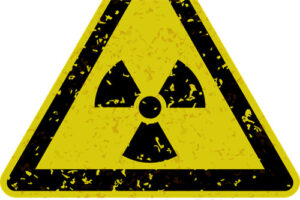The Mystery of Spontaneous Human Combustion: Myth or Reality?
Have you ever found yourself musing over what might be the most agonizing way to go? It’s a grim question, yet one that many of us have secretly entertained at some point—a dark curiosity that, despite its morbidity, is undeniably fascinating. When it comes to suffering, the options are as numerous as they are horrific, making it almost impossible to single out the ultimate method of pain. Nonetheless, one method that has captured imaginations—and raised eyebrows—is death by burning.
Now, the idea of being consumed by flames is universally repulsive, and for good reason: the agony of burning alive is something one can scarcely imagine. Whether it’s a tragic house fire, a catastrophic car accident, or the dramatic act of self-immolation, the very notion sends shivers down the spine. Yet among these fiery fates lies an even more peculiar and controversial phenomenon—spontaneous human combustion (SHC). Picture this: a person suddenly bursting into flames without any apparent external trigger. No gasoline, no open flame, nothing that would naturally set a body ablaze. It’s a scenario that seems ripped from the pages of urban legend, and one that begs the question—could it really happen?

The roots of this bizarre idea stretch back centuries. In 1641, the Danish physician Thomas Bartholin recorded what might be the first instance of spontaneous human combustion, using the mysterious death of Italian knight Polonus Vorstius as an explanation. According to the tale, Vorstius indulged in far too much strong wine; when he belched, the fumes supposedly ignited, turning him into a living inferno. It’s an outlandish story, yet it laid the groundwork for the centuries of debate that would follow.
Fast forward to more recent times, and the phenomenon still finds its way into the annals of mysterious deaths. In 2010, Ireland witnessed a case that rattled both locals and investigators alike: 74-year-old Michael Faherty was declared to have succumbed to spontaneous human combustion. In a baffling twist, no external source of ignition could be identified. The fire had not come from a nearby fireplace, nor was there any evidence of an accelerant. The intense heat had consumed not only his body but also left its mark on the floor and ceiling of the room, as if the flames were confined to him alone. And then there’s the infamous 1885 case of Matilda Rooney, where reportedly only her feet remained while the rest of her body was reduced to ash and scattered bone fragments.
The concept of SHC leaped into popular culture largely thanks to literary giants like Charles Dickens. In his novel Bleak House, Dickens immortalized the idea of a character meeting their end through spontaneous combustion, cementing the phenomenon as both a scientific oddity and a macabre element of folklore. Despite these vivid accounts and the decades of discussion they spurred, the scientific community remains deeply skeptical. In many instances, further investigations have pointed to more conventional causes—a cigarette igniting loose clothing, a stray spark from static electricity—rather than an inexplicable internal blaze.
So, if spontaneous human combustion does indeed occur, what could possibly trigger it? Several theories have emerged over the years, each more intriguing than the last. One theory centers on the buildup of acetone within the body. Research into many of the reported cases shows a common thread: victims often share poor health, a history of heavy drinking, smoking habits, or obesity. In these individuals, the body, starved for traditional energy sources, might break down fat cells, inadvertently producing excessive acetone as a byproduct. Acetone, as it happens, is extremely flammable. In theory, if enough acetone were to saturate the tissues—and even the clothing—it could provide a volatile fuel, ignited perhaps by a stray spark or even static electricity. Interestingly, the blue hue of acetone flames has been noted in several accounts of SHC, adding a splash of eerie consistency to these reports.
Speaking of sparks, another hypothesis points to static electricity as a potential culprit. We’ve all heard stories about static discharges igniting gasoline fumes at a pump. In the right conditions, a shock that can measure up to 5,000 volts might indeed be enough to trigger a small blaze. Some early scientists even speculated that our bodies, if not for their natural moisture, might be prone to such spontaneous bursts of flame—though, thankfully, modern life has largely kept that risk at bay.

There’s also been talk about the flammable gases produced within our guts. Yes, our digestive systems churn out methane—a gas that, under the right circumstances, can catch fire. Some researchers have even suggested that bacteria in our intestines might produce other gases, like phosphine, which could react with methane and hydrogen to create a combustible mixture. The scenario is reminiscent of the eerie glow of swamp gas, known as Will-o’-the-wisp, where decomposing matter gives off a ghostly light. However, if internal explosions were as common as this theory suggests, we’d expect to see such incidents in animals like cows, which produce far more methane than humans—yet no such explosive events are reported.
Perhaps the most widely accepted explanation for these mysterious burnings is the Wick Effect. This idea proposes that a person’s body can act much like a candle. As the fat in the body melts, it soaks into the clothing, creating a sort of wick that sustains a slow, steady burn. This process can reduce the body to mere ash while leaving the surrounding environment surprisingly unscathed. Experiments have even been conducted using pig carcasses wrapped in fabric, mimicking this very effect. The results closely mirror many of the so-called spontaneous human combustion cases, particularly among individuals with higher body fat—often a common characteristic in reported incidents.
Despite these theories, the bottom line remains that most cases attributed to spontaneous human combustion can be explained by more mundane, albeit tragic, circumstances. Take, for example, the widely publicized case of Jeannie Saffin. Although popular accounts claim she burned in her kitchen with no discernible source of flame, closer scrutiny of witness statements and physical evidence points to alternative explanations—a lit cigarette, a stray spark, or even a malfunctioning appliance. Similar doubts surround other cases, such as that of Mary Reeser, who was found in 1951, and Danny Vanzandt, whose death was initially attributed to SHC until further investigations revealed more conventional causes like heart attack complications combined with smoking.
In the end, while spontaneous human combustion remains a captivating and eerie subject—a topic that fits perfectly within the realm of useful, interesting, and downright incredible content—science has yet to provide incontrovertible evidence that our bodies can simply burst into flames from within without any external trigger. The mysteries surrounding these cases continue to fuel debate and fascination, but for now, the phenomenon seems to be more a blend of misinterpretation and myth than a documented, spontaneous occurrence.
This exploration of one of the strangest—and most unsettling—ideas in the realm of death reminds us how reality and myth can intertwine in unexpected ways. It also underscores the importance of skepticism and careful investigation when confronted with phenomena that, on the surface, appear almost too incredible to be true.
























